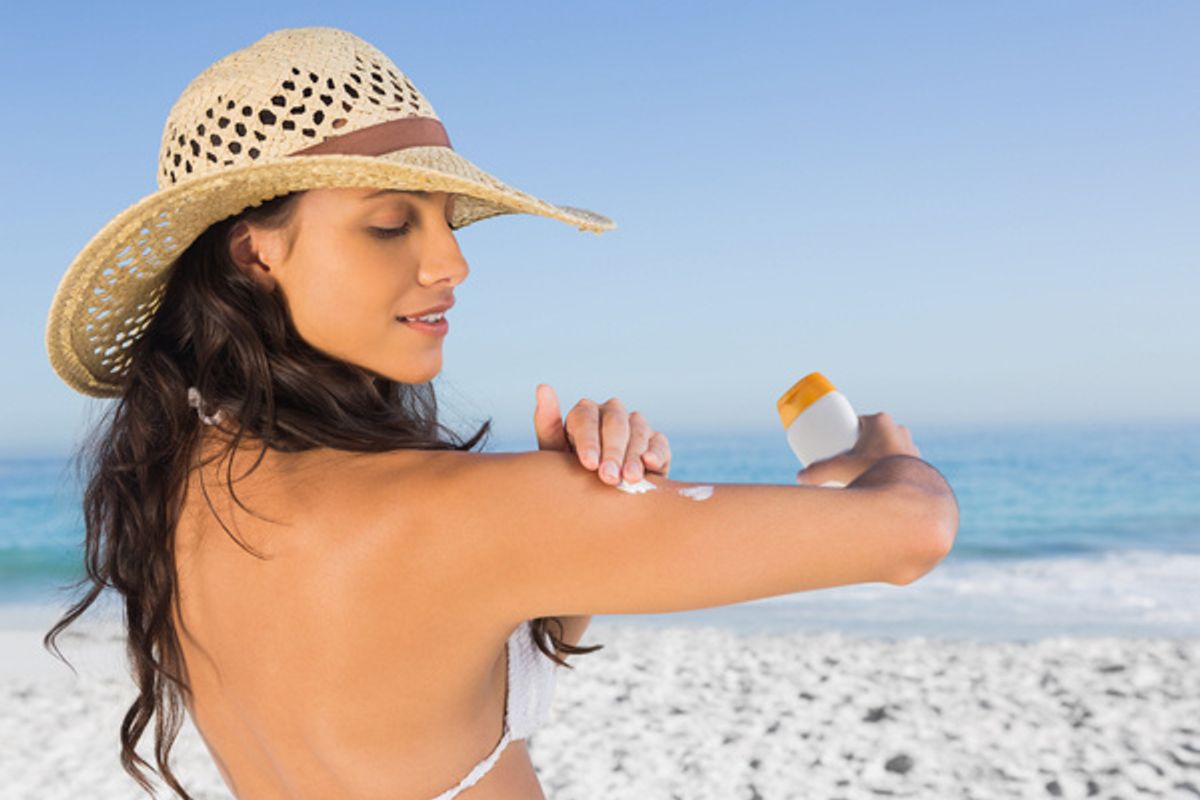
Why Using Sunscreen Is Not Enough
The warm weather looks like it's dug in its heels, I'm remembering that as much as I love it, it takes a certain amount of caution and planning.
Jun 17, 2014
May 23, 2023
Skin Cancer
Sheryl Kraft, a freelance writer and breast cancer survivor, was born in Long Beach, New York. She currently lives in Connecticut with her husband Alan and dog Chloe, where her nest is empty of her two sons Jonathan. Sheryl writes articles and essays on breast cancer and contributes to a variety of publications and websites where she writes on general health and wellness issues. She earned her MFA in writing from Sarah Lawrence College in 2005.
Full BioLearn about our editorial policies

The warm weather looks like it's dug in its heels, I'm remembering that as much as I love it, it takes a certain amount of caution and planning.
I look forward with anticipation to the warmer weather all year long, even more so when we have extreme seasons like we did this past winter. In the summertime I feel freer, happier and more at peace. While many will disagree that 80 degrees Fahrenheit is a comfortable temperature, it's the perfect one for me.
But now that the warm weather looks like it's dug in its heels, I'm remembering that as much as I love it, it takes a certain amount of caution and planning.
Wear it right
Because when the sun shines—as wonderful as it feels—it's important to remember that it also burns.
Using sunscreen is not enough—you have to know precisely how to use sunscreen and the best types to use. And remember: the most hazardous times for UV exposure are between 10 a.m. and 4 p.m.
Some of your most pressing questions answered:
All sunscreens are created equal, right?
Wrong. Although all sunscreens do help prevent sunburn, they are not the same: only some may help lower the risk of skin cancer. Look for broad-spectrum types, which protect your skin from ultraviolet A (UVA) and ultraviolet B (UVB), both of which are harmful to the health of your skin. The American Academy of Dermatology recommends a broad-spectrum sunscreen with an SPF of 30 or higher.
Can I use the leftover sunscreen from last year?
The answer is twofold: Yes, because the stuff is designed to retain its strength for three years. But also no, because if you are using sunscreen correctly and religiously (more on that in a minute), a bottle shouldn't last from one year to the next. Tip: If your sunscreen bottle has no expiration date, write down the date you purchased it on the bottle. Dump anything that's been exposed to very high temperatures or has an off-color or odor.
If I put on sunscreen once at the beach or before I go outside, isn't that enough?
Sunscreen should be applied 20 to 30 minutes before you go outside. And it should be reapplied frequently—about every two hours—but more often if you swim or sweat. Without special approval from the U.S. Food and Drug Administration (FDA), manufacturers cannot claim "instant protection" or protection for more than two hours.
What's the best amount of sunscreen to apply?
Many of us don't apply enough. For best protection, most people need about the size of a shot glass (1 ounce) to adequately cover all the exposed areas of their body—and it needs to be rubbed in well. If the size of your sunscreen container is 4 ounces, about one-fourth of it will be used during one application.
If I wear waterproof or sweat-proof sunscreen, can I swim or sweat and not reapply it?
There's no such thing as waterproof or sweat-proof sunscreen. In fact, the FDA requires manufacturers to include, on the front label, information about how long a user can get protection while swimming or sweating. Only two times are permitted: 40 or 80 minutes.
If it's cloudy out, do I still need sunscreen?
Absolutely. Harmful rays (up to 80 percent) can penetrate cloud cover and even fog; you can still get a sunburn. Be especially careful around sand, snow, water or concrete, all of which can make the sun's effects even stronger. It's best to also cover your head with a hat and your eyes with sunglasses, because sunscreen does not protect you 100 percent.
If I use other skin products, when should I apply sunscreen?
Moisturizer first, then sunscreen and then makeup. If you also use bug spray, make that your last step—putting sunscreen on top of bug spray renders both less effective.
Do I still need sunscreen if my makeup contains an SPF?
The Skin Cancer Foundation says you can get protection with a moisturizer containing SPF combined with a foundation with SPF; two applications of cosmetics containing SPF, they say, increases your protection. And don't forget moisturizing your ears, neck and upper chest (usually forgotten areas, but susceptible to damage). Also recommended is an eye cream with an SPF for the delicate skin around your eyes. After applying your foundation, apply compressed powder with a sponge to help your products stay put throughout the day. (Of course, perspiration or your own skin oils can make the protection wear off, in which case, you'll need to reapply.)
Happy sun! And, please, protect yourself and do it right.